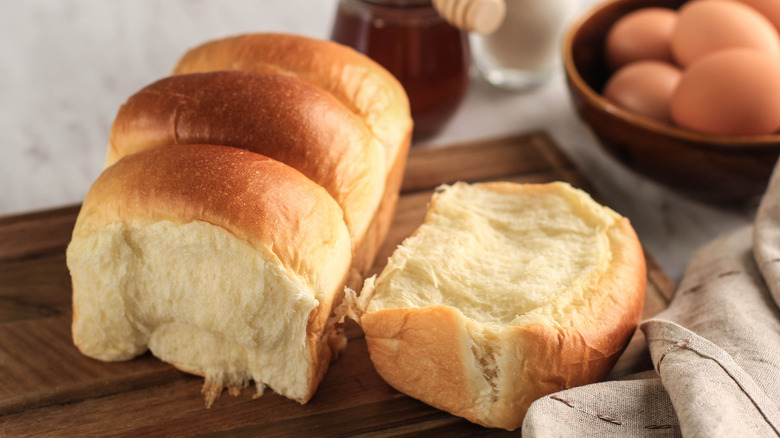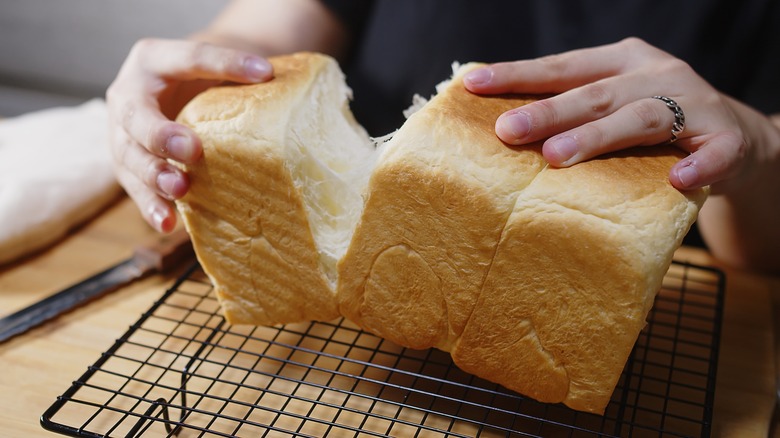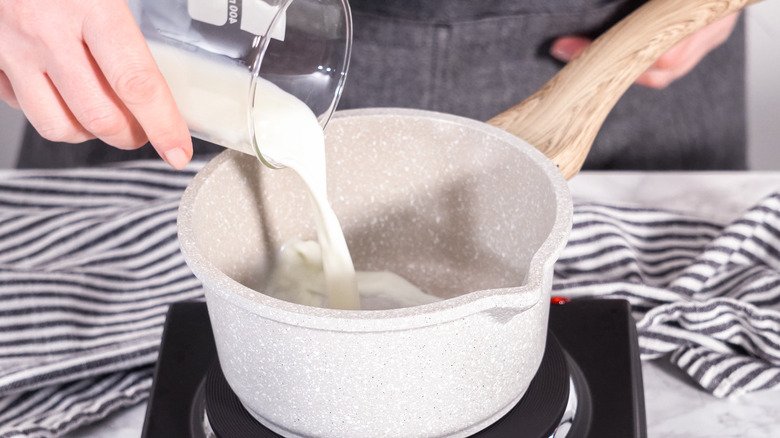Yudane Vs Tangzhong: The Difference Between The 2 Milk Bread Methods
There's a Japanese milk bread called shokupan which is basically a soft, fluffy cloud of baked wonderfulness that seems to defy the laws of both gravity and time. Interestingly, both of these qualities — exquisite softness and a lengthy shelf life — are thanks in large part to the same dough-making process, known in Japan as the yudane method. Essentially, this process traps a larger-than-usual amount of water in the dough by gelatinizing its starch through the addition of heat and water. There is a similar Chinese method for doing exactly the same thing called tangzhong, and since yudane and tangzhong employ different techniques and yield slightly different results, they're worth comparing and contrasting.
First, you should understand that, linguistically, this is a distinction without a difference: both yudane and tangzhong share the same characters (湯種), and are only referred to by their different names in English. As to which came first, that's for food historians to fight over. For our purposes, it's important to know that starch granules get stiff when they dry out — that's why freshly-baked bread is soft, and week-old bread is (literally) crummy. Gelatinizing starches causes them to absorb water in a way that is thermoirreversible; that is, the water stays put, creating a bread that stays moist.
Pros and cons of the yudane method
In the yudane method, a dough starter is made with flour and boiling water (with a typical ratio of 1:1). Once the yudane is mixed together, it's (ultimately) incorporated into an enriched dough that typically includes butter, milk, sugar, yeast, and salt. Breads made with yudane (like shokupan) tend to be light and pillowy-soft, with just a hint of sweetness. They have a good rise, are structured enough for slicing, and shelf stable.
The most obvious drawback to employing the yudane method is the length of time required to get to the dough-making stage. Once cooled, the yudane must be wrapped in plastic and left overnight in the refrigerator — or for at least eight hours — to complete the gelatinization process. (Resting times as short as two hours have been successful, but it's universally agreed that the longer yudane sits, the better it gets.) Regardless, the bread dough can only be assembled once the yudane has sufficiently rested.
Tangzhong pros and cons
Tangzhong is often referred to as a roux starter because flour and water (or milk) are whisked together over heat for a minute or so until thickened. (This is different from the fat-and-flour roux that's key for creamy chicken soup.) Once cool to the touch, the tangzhong can be incorporated into a dough that is similarly enriched as that for shokupan. The most pronounced difference between the tangzhong and yudane methods is their liquid-to-flour ratio, which is typically a remarkable 4:1! No wonder tangzhong is the key method for achieving ultra-tender bread.
As you might imagine, bread baked with the tangzhong method are tighter and denser, with a lower rise than yudane bread. Some bakers have even compared tangzhong to brioche – and the good news here is that it's the increased water content of the dough, and not added fat, which results in this rich mouthfeel. The downside, such as it is, is that the tangzhong method works much better for rolls and buns rather than sliceable loaves. If only Mario Batali had used this method for his apology cinnamon rolls!


